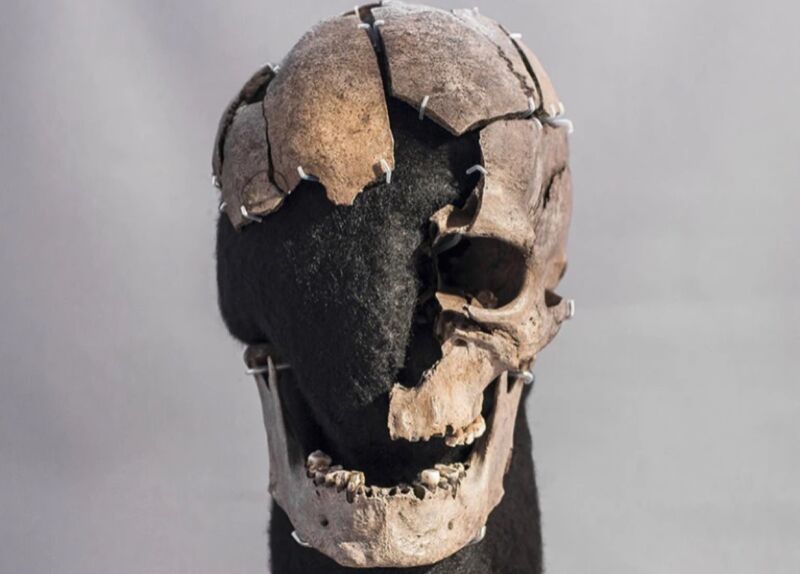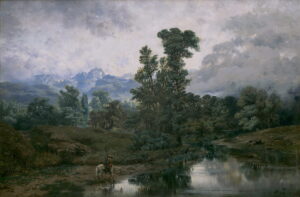Brutally bludgeoned “Vittrup Man” went from forager to farmer before his death

Enlarge / The cranial remains of Vittrup Man, who was bludgeoned to death and tossed in a peat bog between 3300-3100 BCE. (credit: Stephen Freiheit via Fischer A., et al./PLoS ONE)
In 1915, peat diggers recovered the fragmented skeletal remains of a man with a severely fractured skull in a peat bog near the village of Vittrup in Denmark. The remains were kept in a museum for the next century, but scientists have now conducted an in-depth analysis of the remains using a variety of techniques to learn more about so-called Vittrup Man’s life and violent death. They described their findings in a recent paper published in the journal PLoS ONE—including the surprising fact that Vittrup Man grew up in a coastal foraging community along the Scandinavian coast before his murder as an adult in a farming culture in Neolithic Denmark.
Vittrup Man is one of numerous “bog bodies” unearthed from peat bogs in northwestern Europe. These are human cadavers that have been naturally preserved, and frequently mummified, by the unique chemistry of the bogs. As peat ages it releases humic acid, which has a pH level similar to vinegar. The bog bodies are basically pickled, and decomposition is dramatically slowed because of the anaerobic conditions of the bog. The best-preserved bog bodies are those that were put there during the winter or early spring when the water is very cold—less than 4° Celsius (39° F), i.e., too cold for bacteria to thrive—because the bog acids were able to saturate the tissues before decay could begin.
Peat has been a common fuel source since the Iron Age, and there are records of peat diggers coming across bog bodies dating back to 1640 in Germany. Bog bodies became of interest to antiquarians in the 19th century and archaeologists in the 20th century. One of the most famous examples is Tollund Man, a bog body found in the 1950s and dating back to the 5th century BCE. Tollund Man was so exquisitely mummified that he was originally mistaken for a recent murder victim, although only the head was preserved for posterity; the rest of the body was allowed to desiccate, given the less advanced state of preservation techniques in the 1950s.



